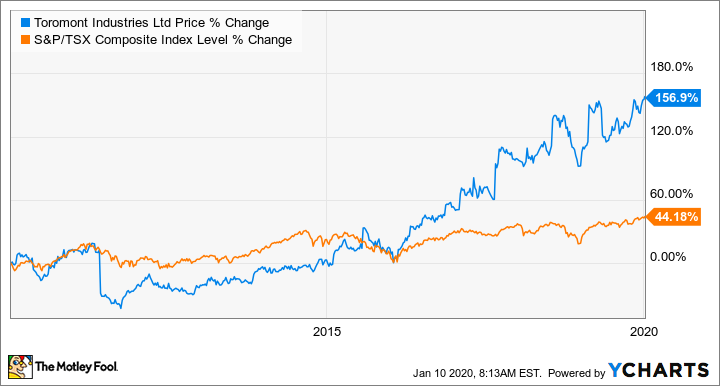Learning to invest is not as difficult as you may believe. With very little experience and knowledge, all Canadians can quickly learn to make smart decisions in the stock market. You can easily learn to identify top stocks to buy on the Toronto Stock Exchange in Canada.
Greater than the market average returns are not difficult to achieve in a stock market portfolio as long as you take a long-term mindset toward your investment decisions. Buy stocks that will perform well over a three- to five-year time frame. Banks, insurance, and any company with a substantial amount of market power like Canadian railroads are perfect options for your retirement portfolio.
Financial stocks and railroads have a solid history of performing well on the TSX, even during difficult economic times. Nevertheless, it is always best to also diversify your portfolio into other industries. If you are looking to diversify outside of bank, insurance, and railroad stocks, Toromont Industries (TSX:TIH) is one of the best stocks to buy right now on the TSX in Canada.
Higher return to equity than the industry
Toromont Industries has a trailing 12-month return on equity of 20.57%, higher than the average of around 11% in the industrial distribution industry. The return to equity is calculated by dividing the average shareholders’ equity into net income. A return on equity of 20.57% is in the normal range for the market as a whole.
Likewise, the payout ratio is 30.41%, meaning just over 30% of the net income is distributed to shareholders in the form of dividends. Thus, the company keeps 69.59% of the net income as retained earnings for reinvestment into profitable business activities. If you multiply the return on equity to the retention rate, you will yield the sustainable growth rate for the stock.
The sustainable growth rate for Toromont Industries is 14.31%. This tells us that the company returns a decent portion of earnings to shareholders while retaining enough to grow its net income faster than the rate of inflation. Following this logic, you can reasonably expect 30% of that growth to be returned to you in the form of dividends, or around 6.26% of the sustainable growth rate.
Positive profit margins and levered free cash flow
The profit margin on Toromont Industries is a positive 7.77%. The profit margin is the percentage of revenue represented by the difference between sales and expenses. If a company has a negative profit margin, it means that expenses exceed its sales revenue.
You always want to invest in stocks with positive profit margins. Exceptions to this rule are companies that are temporarily lowering prices below cost to capture market share. You can see this in new industries like cannabis.
Toromont Industries also has a positive levered free cash flow (FCF) of $229.38 million. Positive levered FCF tells investors that there is money left over for shareholders after the company pays interest to bondholders. In general, you should buy stock in companies that have a positive levered FCF and purchase the debt in companies that have a negative levered FCF.











